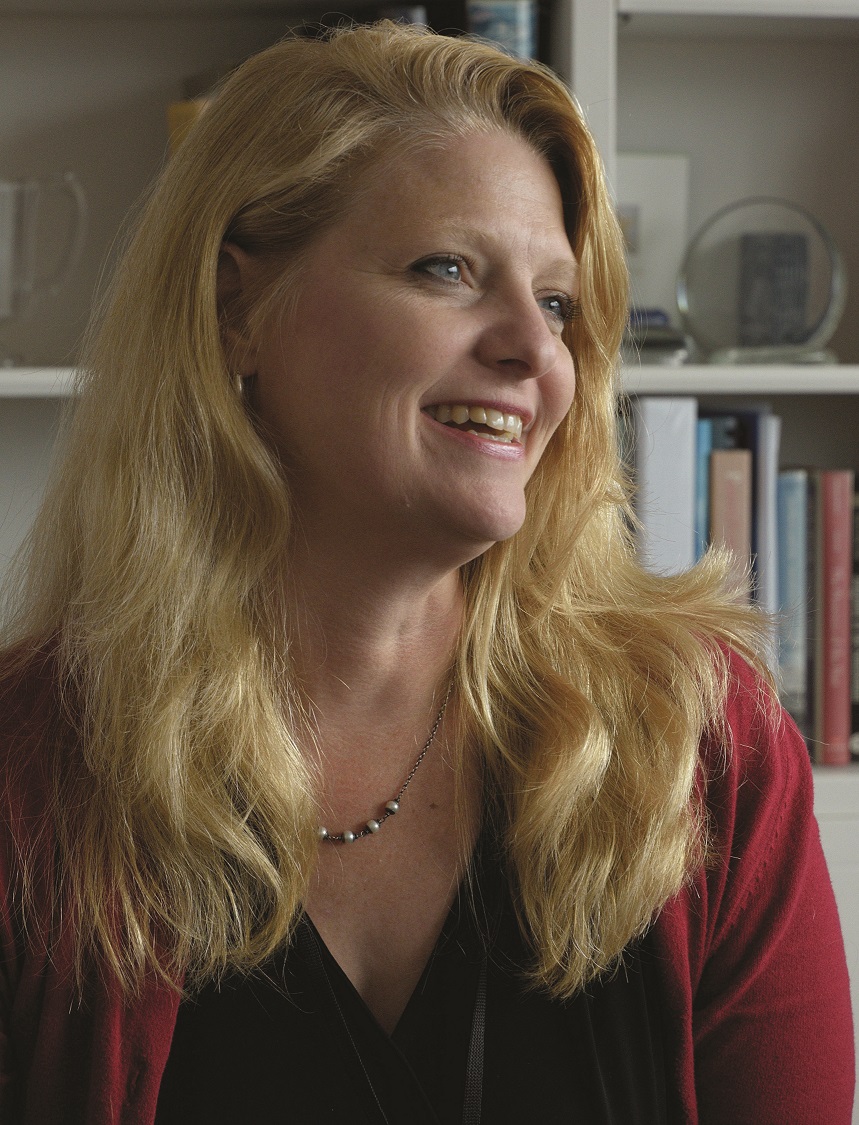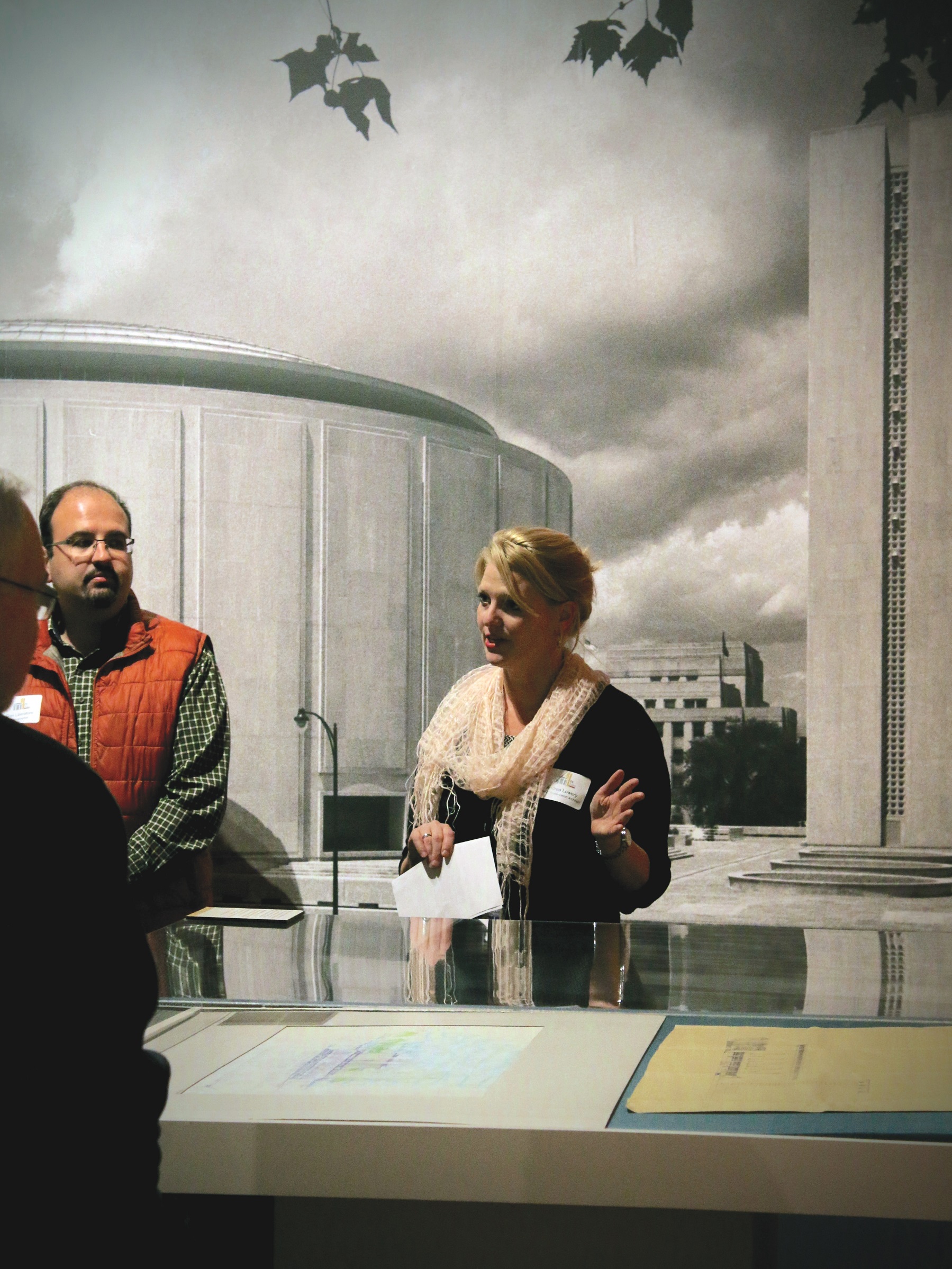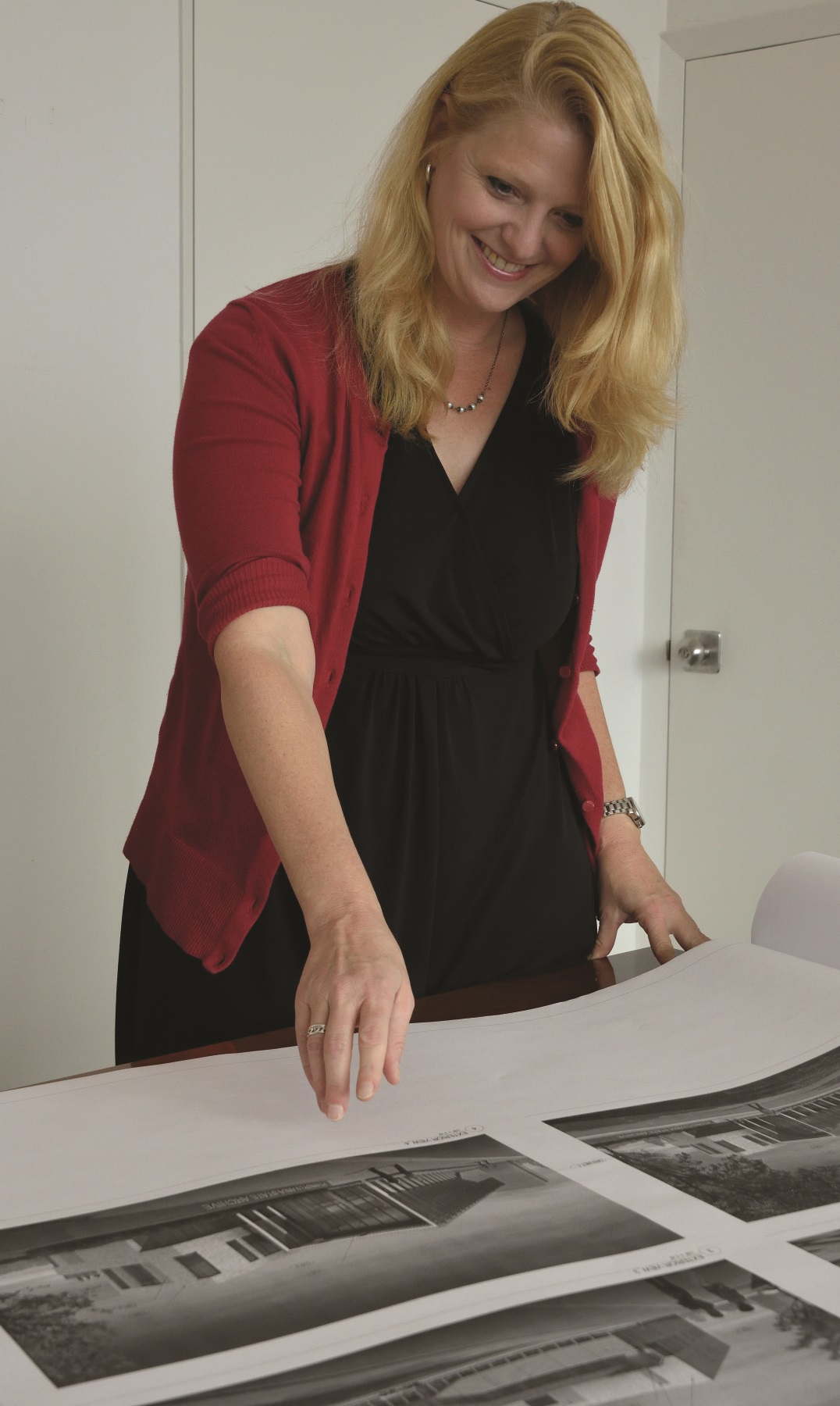If you’ve been reading our blog with any frequency, you know that we believe that a large part of what makes PHMC great is the people who work here. This interview with PHMC’s Executive Director, Andrea W. Lowery, gives you a chance to get to know her better.
This interview between Andrea Lowery and PHMC’s Social Media Manager Sean Adkins was first published in Pennsylvania Heritage 44, no. 1 (Winter 2018): 36–40. Pennsylvania Heritage is a popularly styled, liberally illustrated quarterly magazine co-published by the Pennsylvania Historical and Museum Commission and the Pennsylvania Heritage Foundation. The magazine is available through memberships to the Pennsylvania Heritage Foundation or the State Museum of Pennsylvania. The Winter 2018 issue can be purchased directly from ShopPaHeritage.
In August 2017 the Pennsylvania Historical & Museum Commission (PHMC) appointed Andrea W. Lowery as the new executive director of the agency. A preservationist with more than two decades of experience, Lowery succeeds James M. Vaughan, who retired in July 2017. Lowery has worked for PHMC since 2011, most recently serving as chief of the agency’s Division of Architecture and Preservation (DAP).

PHMC’s Executive Director Andrea Lowery. Photo by Don Giles, PHMC.
Initially arriving at PHMC as an architectural supervisor for DAP, Lowery has managed the budget for the agency’s capital improvements and spearheaded PHMC’s master planning initiatives. She served as the liaison between design professionals and the Pennsylvania Lumber Museum in Galeton, Potter County, during the site’s recent renovation and expansion. At Old Economy Village in Ambridge, Beaver County, Lowery designed the replacement thatch roof that now covers the stone grotto and created the site’s reproduction blacksmith shop.
Currently, Lowery is managing the design of the future home of the Pennsylvania State Archives in Harrisburg, Dauphin County. To that endeavor she brings a wealth of experience culled from work on past projects, including assignments for the Architect of the Capitol, the National Trust for Historic Preservation, the U.S. General Services Administration and Yale University.
Although she is not a native of Pennsylvania, Lowery has roots in the Keystone State that extend deep into the commonwealth’s history. Her Bakewell ancestors operated glassware enterprises in Pittsburgh throughout the 19th century; they were renowned for their cut and engraved glass. Today, Lowery prominently displays in her new office a glass memento made by Bakewell. She also has a connection to another notable Pennsylvanian through Lucy Bakewell (1787–1874), who married famed American ornithologist John James Audubon (1785–1851).
Lowery’s great-great grandfather, Henry Wilbur Palmer (1839–1913), was Pennsylvania’s attorney general (1879–83) and then served in the U.S. House of Representatives (1901–07, 1909–11). His wife, Ellen Webster Palmer (1839-1918), labored to secure fair pay for breaker boys in Luzerne County. Lowery recalls hearing about the statue of her great-great grandmother in Scranton, Lackawanna County, and the glass factory in Pittsburgh as she was growing up. When she came to Pennsylvania, she knew it was a very comfortable fit.
Recently, Sean sat down with Lowery to discuss her background, her inspirations and her vision for PHMC.

Andrea Lowery and Sean Adkins discuss her background before coming to PHMC. Photo by Don Giles, PHMC.
Would you tell our readers where you were born and raised?
I was born and raised in Connecticut. When I was in sixth grade, my parents moved the family to Washington, D.C.
And your family background?
I grew up hearing about my mom’s family coming down through the Old Mine Road to the Delaware Water Gap and the Conestoga River. Those ancestors started out as farmers and teachers and ultimately went into the ministry as Methodists and Episcopalians. I remember, as a child, traveling to my great-aunt’s house in Conshohocken [Montgomery County] for family reunions. My mom’s side of the family was in Pennsylvania from very early on.
My dad’s side came to Pennsylvania from New England. They first operated a brewery in New Haven, Connecticut, in the late 1700s, and it burned down. Later, the family moved to New York and went into the import/export business. A trade embargo contributed to that enterprise crashing. Next, they moved to Pittsburgh and opened Bakewell glass. Later, my father’s family moved to California, eventually returning to New England. My mom’s family remained in Pennsylvania, later moving to New England.
What can you tell us about your education?
I grew up knowing that I had a lot of Pennsylvania roots. So, when it came time for college, I applied to both Haverford College and Bryn Mawr College. I ended up starting at Haverford and transferring to Bryn Mawr. Going to a liberal arts college in southeast Pennsylvania was very comfortable to me. I had so many connections there. I later attended Ohio State University for my master’s degree in architecture.
How did you first become interested in architecture and preservation?
I studied art history as an undergraduate. At the time, I didn’t know exactly what I wanted to do. After college, I returned to Washington, D.C., and worked for a U.S. Navy contractor. One day, just randomly, I ended up going on a tour of the former City Post Office next to Union Station. At the time, it was being renovated as the National Postal Museum. Leading the hardhat tour were an architect and an architectural historian. As I listened to the architectural historian speak, I thought, “This is what I want to do; this is it for me.” I spoke to the architectural historian after the tour and asked, “How do you get to do what you do? I really want to do that.” And she responded with one of those unhelpful answers, “Well, there’s really no direct path.” So, I researched architectural history programs. Soon, I decided that I would be broader-based in my search. I thought, to be frank, “How many architectural history jobs will be available when I graduate?” So, I looked at architecture graduate programs that specialized in historic preservation.

Andrea Lowery talks with visitors about the history and Mid-Century Modern style of the State Museum in 2016. Photo by Don Giles, PHMC.
Who fostered your studies in historic preservation?
The summer of my first year at Ohio State University, I got an internship at the Octagon House in Washington, D.C. I was lucky. I spent the entire summer scraping 20 layers of paint from a plaster chair rail and doing research for the house. Most people would say, “That’s like torture!” But for me, it was so fun and I felt so fortunate. Lonnie Hovey, director of the Octagon House, and Brian Powell, the museum’s technical expert, provided formative experience for me as far as preservation was concerned.
After graduate school, I went to work for Emily Eig, the woman who had told me years before that there was no direct path to becoming an architectural historian. I spent the first four years of my career working as an architectural historian for her. And I loved that. It was incredibly fun. From Emily, I learned the application of historic preservation, methodologies and policies to document and preserve buildings. I got the chance to see how preservation works in the real world.
I soon found I missed architecture and worked for firms in D.C. and Philadelphia that practiced historic preservation. Next, I spent 10 years at Hillier Architecture. The head of the preservation group was George Skarmeas. He helped me become more rigorous in the way that I approach preservation. From George, I received many opportunities to work on complex projects such as President Lincoln’s Cottage in Washington, D.C.
What are some of your favorite historic buildings in Pennsylvania?
I remember coming up from Washington, D.C., to visit Fonthill Castle, which is in Doylestown [Bucks County]. To me, that is such a cool building. Seeing Henry Chapman Mercer’s vision going from nothing—so against the grain of the time and so creative, using the building and its sculptural form to express himself. I just thought that was evocative of who he was. I also really appreciate the diverse campus architecture that you see across Pennsylvania.
How has your past work experience with PHMC prepared you for the challenges you’ll face as executive director?
I came to PHMC with broad preservation experience. I had worked as an architectural historian. I had worked on tax credit projects. I had done master planning. I had completed large-scale institutional projects. I had a lot of things already in my arsenal to prepare me for PHMC. When I came here, I was given a lot of exposure to its bureaus [Pennsylvania State Archives, The State Museum of Pennsylvania, Historic Sites and Museums, State Historic Preservation Office], and I worked on a lot of projects for the sites. As division chief of DAP, I was doing a lot of budgeting. I also worked on The State Museum’s new exhibit The Pennsylvania Turnpike: America’s First Superhighway, so I understand how exhibits are produced.

Executive Director Andrea Lowery talks about the proposed PA State Archives building. Photo by Don Giles, PHMC.
I now have a great understanding of the various bureaus and pieces that make up PHMC. We are much more comprehensive than a lot of other comparable state agencies. I understand how PHMC’s bureaus work. Many people don’t put us together as a whole. I think there are a lot of opportunities out there for us to inform them of the breadth of what PHMC does, especially as it relates to the importance of preservation across the state.
What is your long-term vision for PHMC?
I think it’s important that we reach populations that we haven’t reached previously. I want to show that the past has a relation to the present and the future.
I loved what I was doing in the private sector, but I’m really driven by the idea of public service. I feel that we are well-positioned to promote Pennsylvania history and show how relevant PHMC is to Pennsylvanians. I feel that I have an opportunity to take us into 21st century, especially in seeing the diverse ways in which the bureaus work. At PHMC, we should be leaders in our field. I think in some ways we already are, but there are other possibilities. We should be out in front doing cutting-edge stuff. That’s really what I want to do. I want to make us accessible. I want to make us relevant.
Comment Policy
PHMC welcomes and encourages topic-related comments on this blog. PHMC reserves the right to remove comments that in PHMC’s discretion do not follow participation guidelines.
Commenters and Comments shall be related to the blog post topic and respectful of others who use this site.
Commenters and Comments shall not: use language that is offensive, inflammatory or provocative (this includes, but is not limited to, using profanity, obscene, or vulgar comments); disparage other commenters or people; condone illegal activity; identify the location of known or suspected archeological sites; post personal information in comments such as addresses, phone numbers, e-mail addresses or other contact details, which may relate to you or other individuals; impersonate or falsely claim to represent a person or an organization; make any commercial endorsement or promotion of any product, service or publication.
If you would like to comment on other topics not related to this blog post but related to PHMC, please fill out the PHMC Contact Us Form.
Leave a Reply